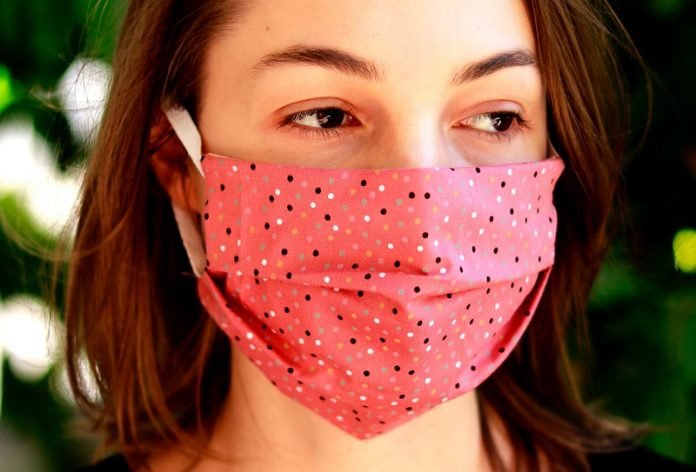
For more than two years, COVID-19’s direct harm has been visible in overflowing intensive care wards and grim statistics. Now, some of its indirect effects are coming into focus.
Studies are linking the pandemic to higher rates of fatal heart disease and stroke, deaths from addiction-related problems, and more.
The exact causes of these connections are still being determined, experts say, but the effects may be long-lasting.
With heart health, part of the problem is that people often avoided or delayed treatment because of COVID-19 fears, said Dr. Donald Lloyd-Jones, a cardiologist at Northwestern University Feinberg School of Medicine in Chicago.
“People lost touch with their usual sources of health care,” said Lloyd-Jones, president of the American Heart Association.
“And we saw dramatic differences in blood pressure control rates, in diabetes control rates. People just weren’t able to check in with their doctor and know their numbers and make sure that those things were under control.”
The harm from such delayed care is not just short-term, he said. “It’s going to last and have ripple effects for years to come.”
Lloyd-Jones was co-author of a study published recently in JAMA Network Open that showed after years of trending down, the risk of dying from heart disease or stroke spiked in 2020 – the first year of the pandemic.
Even after adjusting for the aging population, the risk of dying from heart disease rose by 4.3%, and by 6.4% for stroke.
The increases were highest among Black people, who had double the risk of dying from stroke and a fivefold higher risk of dying from heart disease than white people.
The study said likely factors included hospital overcrowding, fewer visits for medical care, poorer medication adherence and increased barriers to healthy lifestyle behaviors.
That finding was just one of several about increased death rates during the first year of the pandemic.
Dr. Patricia Best, an interventional cardiologist at Mayo Clinic in Rochester, Minnesota, said the statistics reflect the overwhelming challenges hospitals faced from waves of COVID-19 patients.
For example, “there were issues with transport, where people weren’t able to be moved from an ambulance into a hospital because there were no beds,” Best said.
“And there were times where patients were waiting a long time to be transferred from one hospital to another where there was a bed for appropriate care.”
Routine care also decreased, she said, “because we had periods of time where patients were unable to get into their doctor’s offices.”
Or those who lost a job with health insurance couldn’t see a doctor or fill a prescription because of the cost.
That made existing disparities in care worse, said Dr. Connie Tsao, a cardiologist at Beth Israel Deaconess Medical Center in Boston.
It’s not enough for health care professionals, she said, to simply instruct the most disenfranchised individuals to pull themselves out of unhealthy situations – such as poverty or a lack of access to healthy food.
“I think it really boils down to what can other people do?” Government entities and health organizations need to create structural changes, Tsao said.
Still, individuals can take steps to protect themselves:
‒ Get back on track with regular care – now. “It is safe,” Lloyd-Jones said. “It is important. Get with your doctor, know your numbers and make a plan for how we’re going to get things back under control.”
‒ Restart healthy routines that include physical activity, nutritious food and proper sleep, Tsao said.
‒ If you’re dealing with addiction, the Substance Abuse and Mental Health Services Administration offers a national helpline at 800-662-HELP (4357) or by texting your ZIP code to HELP4U (435748).
‒ If you or a loved one is having symptoms of a serious problem, don’t ignore them. “During the pandemic, we saw a lot of people coming in very late with their heart attacks, where there’s less we can do for it,” Best said.
“And that’s one of the things that was increasing the mortality.” People should quickly call 911 if they experience chest discomfort or other heart attack symptoms or if they or a loved one develops stroke symptoms such as face drooping or speech difficulty.
‒ Get vaccinated and boosted. “If you get your COVID vaccine, you’re less likely to get COVID,” Best said. “And you’re less likely to be in the hospital with COVID. You’re less likely to be one of the factors that are decreasing the resources for everyone else.”
‒ De-stress. Stress takes a toll on many heart-related factors – “on our sleep, on our blood pressure, on our ability to lose weight,” Lloyd-Jones said.
When you exercise, for example, “you’re giving your body a pop-off valve for some of that stress.”
Many health insurance plans offer options for mental health services to manage stress, as do employee assistance programs.
Reestablishing social connections also will lower stress, Lloyd-Jones said, and help people “get back to joyful living, which is good for your heart and good for the brain.”
Written by Michael Merschel.
Sign up for our newsletter for more information about this topic.
If you care about COVID, please read studies that two doses of COVID-19 vaccine may protect against long COVID, and brain shortcuts may explain why many people are against COVID vaccine and masks.
For more information about COVID, please see recent studies that almost 1 in 3 older people develop new health problems after COVID-19 infection, and results showing you need three COVID-19 exposures to get a broad immunity for omicron.




